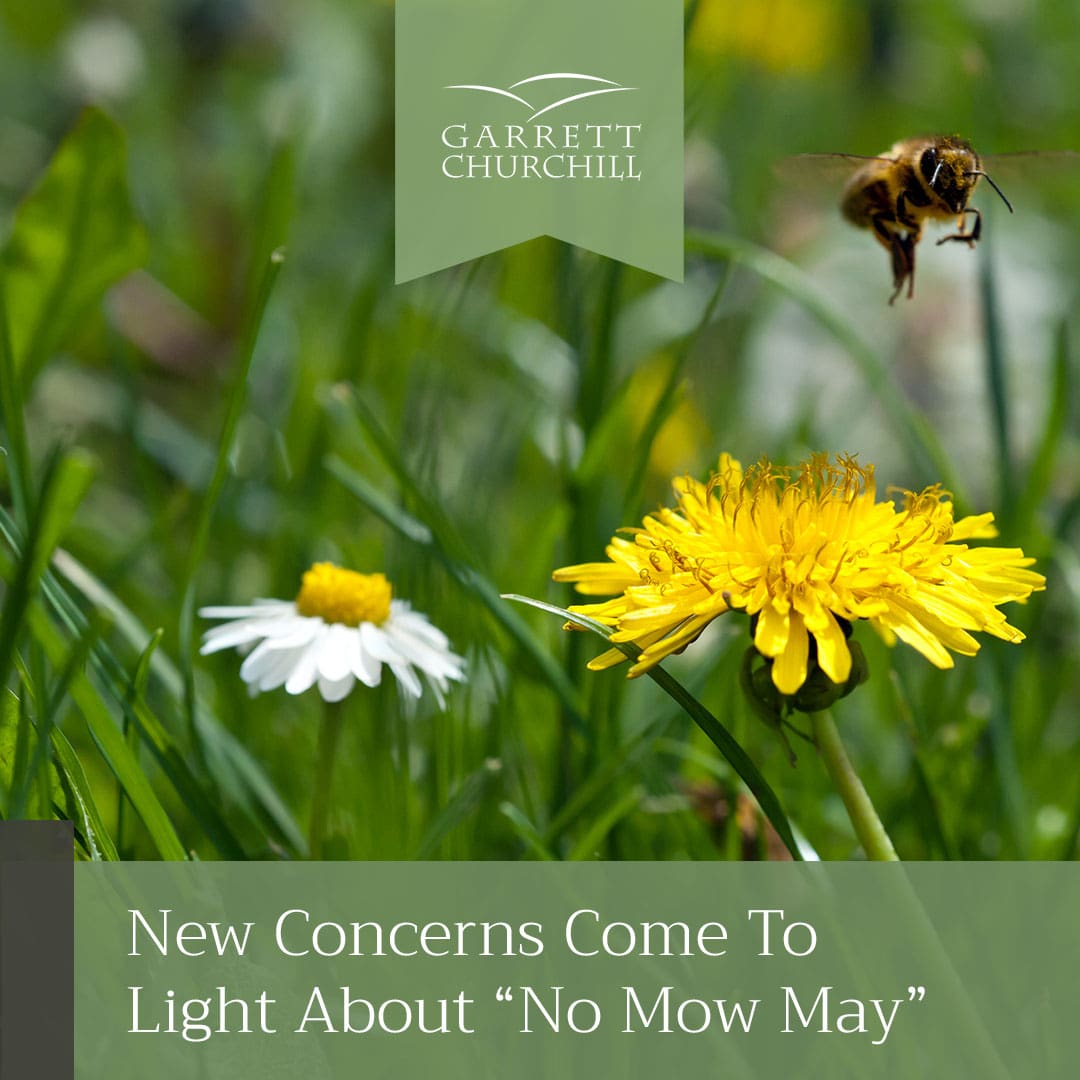New Concerns Come to Light About “No Mow May”
As the weather gets warmer and our lawns grow longer, many of us are gearing up to spend more time maintaining our yards. While you may be eager to get out and give your lawn a long-awaited trim, some property owners are choosing to hold off for just a little while longer.
Plantlife’s No Mow May campaign, launched in 2019, is an initiative designed to benefit plants and pollinators alike. News about its benefits spread like wildfire — until more information surfaced suggesting it may not be all it’s cracked up to be.
That doesn’t mean it’s entirely without merit, but it does raise some eyebrows about how beneficial it really is. So, before you decide to participate in No Mow May yourself, it’s important to recognize the decision to pause your landscape maintenance may have negative consequences down the road.
What is No Mow May?
Did you know that lawns make up 2% of land in the United States? That’s roughly 40 million acres. While a crisp, clean, well-maintained lawn has historically been the prototype for American landscapes, curb appeal doesn’t typically offer many benefits to wildlife.
Due to habitat loss, the use of pesticides and insecticides, and an overall reduction in biodiversity, wildflowers and pollinating insects have been in steady decline for decades now.
The initial idea behind No Mow May was that by allowing your lawn to grow freely — no mowing, watering, or fertilizing — for the month of May, you’re encouraging a healthy habitat for bees and other pollinators. The campaign reinforces the concept that by doing less for your lawn, you are helping the environment.
However, the research supporting this appears to be deeply flawed, and the published study summarizing the benefits of No Mow May for pollinators has since been retracted. When it came right down to it, there was little to no compelling evidence that letting your lawn grow out in May did anything to improve the environment.
What No Mow May Got Wrong
A conflicting (and legitimate) study goes deeper into the relationship between lawn care and pollinators. And the results were intriguing.
As it turns out, pollinators weren’t visiting lawns that were manicured weekly, which makes sense, given that there aren’t as many weed flowers. But those mowed every other week saw quite a few more pollinators.
The third week, however, was the most telling — there were significantly fewer visitors to these lawns than to the ones mowed every two weeks.
This suggests that while mowing every week might not be necessary and waiting an extra week could even benefit pollinators slightly, going too long could have the opposite effect.
Consequently, if the number-one reason you participate in No Mow May is for environmental reasons, you may want to reconsider. Letting it go a month and then cutting will significantly stress your turf.
Benefits of No Mow May
While the purported advantages behind No Mow May have been debunked, the initiative did highlight the importance of supporting biodiversity and encouraging natural habitats. The campaign’s initial benefits were as follows:
It’s Easy
Skipping your lawn chores for a while isn’t exactly a difficult task. While those plants grow freely, they’ll also be doing their fair share of work for the environment. In fact, just eight dandelions can produce enough nectar to meet an adult bumblebee’s energy requirements. (Plus, dandelion root systems are great for naturally aerating and fertilizing your soil.)
It Diversifies Your Garden
Last year, gardeners participating in “No Mow May” recorded 250 wild plant species. By choosing not to mow, rare plants may take root, including wild strawberries, wild garlic, and more.
There’s Still Room for Curb Appeal
You may think of “No Mow May” as a month of sacrificing your lawn for the greater good, but that doesn’t mean “unmowed” has to mean “untidy.” Trimming edges and the longer areas can make the decision look strategic rather than neglectful.
You can also set up a sign explaining what you’re doing to raise awareness (and possibly encourage some neighbors to do the same).
Turf Health Considerations
While some of these benefits could appeal to you even if there are inconsistencies in No Mow May’s research findings, here are a few things to consider before putting your lawnmower back in the shed.
For those with fertilized lawns, we advise against participating in No Mow May. This is because you should really only be removing about one-third of growth each time you mow your lawn. With that in mind, letting your grass grow for an entire month and then giving it a drastic cut can be incredibly stressful for the turf.
Additionally, some community landscaping policies may not allow for No Mow May’s unruly lawns.
If you still want to participate in No Mow May for the convenience factor but don’t want to negatively impact your local fauna, there are still a few workarounds for making your outdoor space more pollinator friendly. For example:
- Plant more nectar-rich plants in your garden.
- Grow an untamed window box or planter, rather than your entire lawn.
- Maintain an attractive lawn with a mixture of pollinator-friendly grasses and low-growing perennials.
Get Help From a Professional Landscaper
Are you interested in growing a lawn that’s both aesthetically appealing and environmentally friendly? Our expert landscapers can help. Click here to learn more about our lawn maintenance services including annual planting, spring and fall clean-ups, tree care, and turf care.
